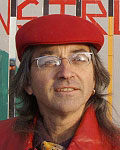Thirty-three year GAL member David Freeman builds guitars, teaches lutherie at his school Timeless Instruments, and sells wood and supplies. He is also a sculptor in various media.



Thirty-three year GAL member David Freeman builds guitars, teaches lutherie at his school Timeless Instruments, and sells wood and supplies. He is also a sculptor in various media.

2017
AL#130 p.22
David Freeman

2015
AL#121 p.65
David Freeman

2013
AL#113 p.50
Roger-Alan Skipper Dana Bourgeois Frank Ford Charles Freeborn David Freeman Evan Gluck John Greven George Gruhn Arnold M.J. Hennig Bruce Petros Andy Powers Tim Shaw Marc Silber Robert Steinegger

2012
AL#111 p.60
David Freeman

2011
AL#108 p.65
David Freeman

2010
AL#102 p.3 read this article
David Freeman

2009
AL#99 p.7 ALA4 p.52
David Freeman

2006
AL#85 p.62 read this article
David Freeman

2001
AL#68 p.66
David Freeman

2001
AL#68 p.66 BRB6 p.326
Robert Steinegger David Freeman

2001
AL#67 p.65 BRB6 p.457
David Freeman

2000
AL#62 p.18 BRB6 p.42
Jonathon Peterson David Freeman

1995
AL#44 p.56
David Freeman

1993
AL#33 p.35 BRB3 p.308
David Freeman

1992
AL#32 p.67 BRB3 p.489
David Freeman

1992
AL#32 p.69
David Freeman

1991
AL#25 p.6 BRB3 p.16
Steve Banchero David Freeman Larry Kirmser David Vincent Donald Warnock

1990
AL#22 p.49 BRB2 p.484
David Freeman Ralph Novak

1987
AL#12 p.58 BRB1 p.470
David Freeman
